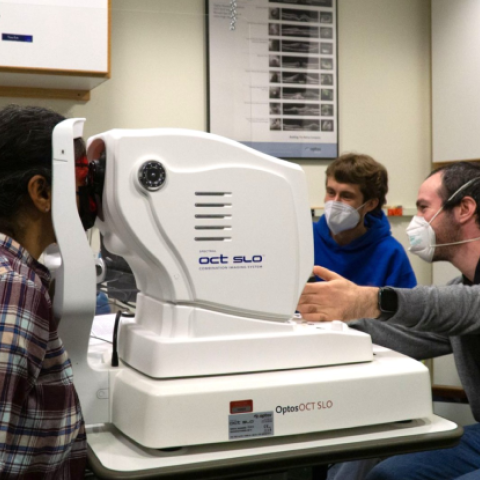

- Principal Investigator:
- Natela Shanidze
Loss of stability and falls is a major risk factor for injury and death in older adults. Previously overlooked, lifetime noise exposure has been shown to cause damage to the vestibular periphery, which is anatomically adjacent to the cochlea. The vestibular system plays a critical role in detection of head movements and orientation with respect to gravity and is essential for normal vision and postural control. Therefore, the effects of noise may accelerate disability associated with natural aging. The goal of this project is to characterize vestibular loss associated with natural aging and how it is compounded by cumulative noise exposures throughout one’s life, in early-, middle-, and late-adulthood. This project is being done in parallel with animal studies led by Dr. Courtney Stewart for maximal translation of the results to the clinic. Individually, both animal and rodent studies have proven invaluable to our understanding of the effects of noise exposure on vestibular function. However, both have limitations that can be best addressed with a set of complimentary studies in the two systems. This project is part of a comprehensive, multidisciplinary approach that strives to evaluate the underlying mechanisms in increased falls and fall risk due to a history of noise exposure in older adults. The susceptibility of these individuals to potentially fatal falls underscores the need for a systematic approach, that can eventually result in improved training and rehabilitation methods to be used with this population.

